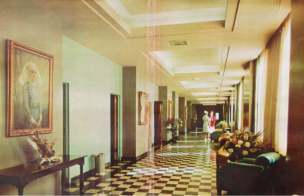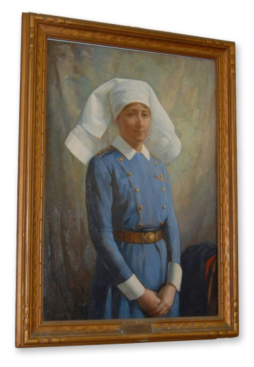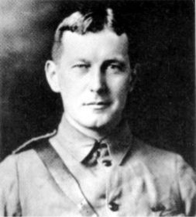Remembrance Day

If you were to take a stroll down Livingston Hall of The Montreal General Hospital 50 years ago, you would see comfortable chairs, vases filled with flowers, a shiny black and white floor and there would be a buzz of young nurses who called this hall home during their training years.
Today, it looks quite different, but the past remains in the form of plaques and paintings lest we forget who helped make us who we are today, including those who fought for our country in WWI and II.
A plaque dedicated to Nora Livingston, a pioneer of nursing education and founder of Livingston Hall, hangs proudly along this corridor today. And a display features the nursing class that are celebrating their 50th anniversary this year.

As you walk along there is also a plaque that lists all 105 MGH Nursing graduates who served in WWI. A second plaque lists the WWII nurses, twice that number. One of these nurses is Sarah Edith Young, superintendent of Nursing from 1919-1927, whose portrait is displayed in this corridor. She is pictured wearing her ceremonial blue service uniform. Young joined the Number 1 Canadian General Hospital in 1916 with postings in England and France, and received the "Royal Red Cross" for distinguished service. You can read stories about some of these nursing pioneers on the MGH Nursing alumni website.
Our MGH nurses’ past can also be obtained by reading The War Diary of Clare Gass, a revealing account of an MGH nursing graduate who spent four years as a lieutenant and nursing sister in the medical corps of the Canadian Expeditionary Force in France.
 Gass worked alongside Dr. John McCrae, a physician from the Royal Victoria and Montreal General hospitals. Lieutenant Colonel McCrae was appointed as a field surgeon in the Canadian artillery and was in charge of a field hospital during the Second Battle of Ypres in 1915. Dr. McCrae's friend and former student, Lt. Alexis Helmer, was killed in the battle. It was his burial that inspired Dr. McCrae to write the now internationally renowned poem, "In Flanders Fields," written on May 3, 1915. These poppies bloomed across some of the worst battlefields of Flanders in World War I, their brilliant red colour an appropriate symbol for the blood spilled in the war.
Gass worked alongside Dr. John McCrae, a physician from the Royal Victoria and Montreal General hospitals. Lieutenant Colonel McCrae was appointed as a field surgeon in the Canadian artillery and was in charge of a field hospital during the Second Battle of Ypres in 1915. Dr. McCrae's friend and former student, Lt. Alexis Helmer, was killed in the battle. It was his burial that inspired Dr. McCrae to write the now internationally renowned poem, "In Flanders Fields," written on May 3, 1915. These poppies bloomed across some of the worst battlefields of Flanders in World War I, their brilliant red colour an appropriate symbol for the blood spilled in the war.
Both the Royal Victoria and Montreal General Hospitals sent a contingent of medical staff to the front in World War I and II. In WWI, 125 nurses from the RVH were sent to war; in WWII, 180 were sent.
There are many heroes that walk among us and that have gone before us. We have only given you a small glimpse into some of the MUHC pioneers who have made sacrifices and served their country. On this day, please join us as we take a moment to remember and recognize our brave men and women.
 In Flanders Fields
In Flanders Fields
In Flanders fields the poppies blow
Between the crosses, row on row,
That mark our place; and in the sky
The larks, still bravely singing, fly
Scarce heard amid the guns below.
We are the dead. Short days ago
We lived, felt dawn, saw sunset glow,
Loved, and were loved, and now we lie
In Flanders fields.
Take up our quarrel with the foe:
To you from failing hands, we throw
The torch; be yours to hold it high.
If ye break faith with us who die
We shall not sleep, though poppies grow
In Flanders fields.